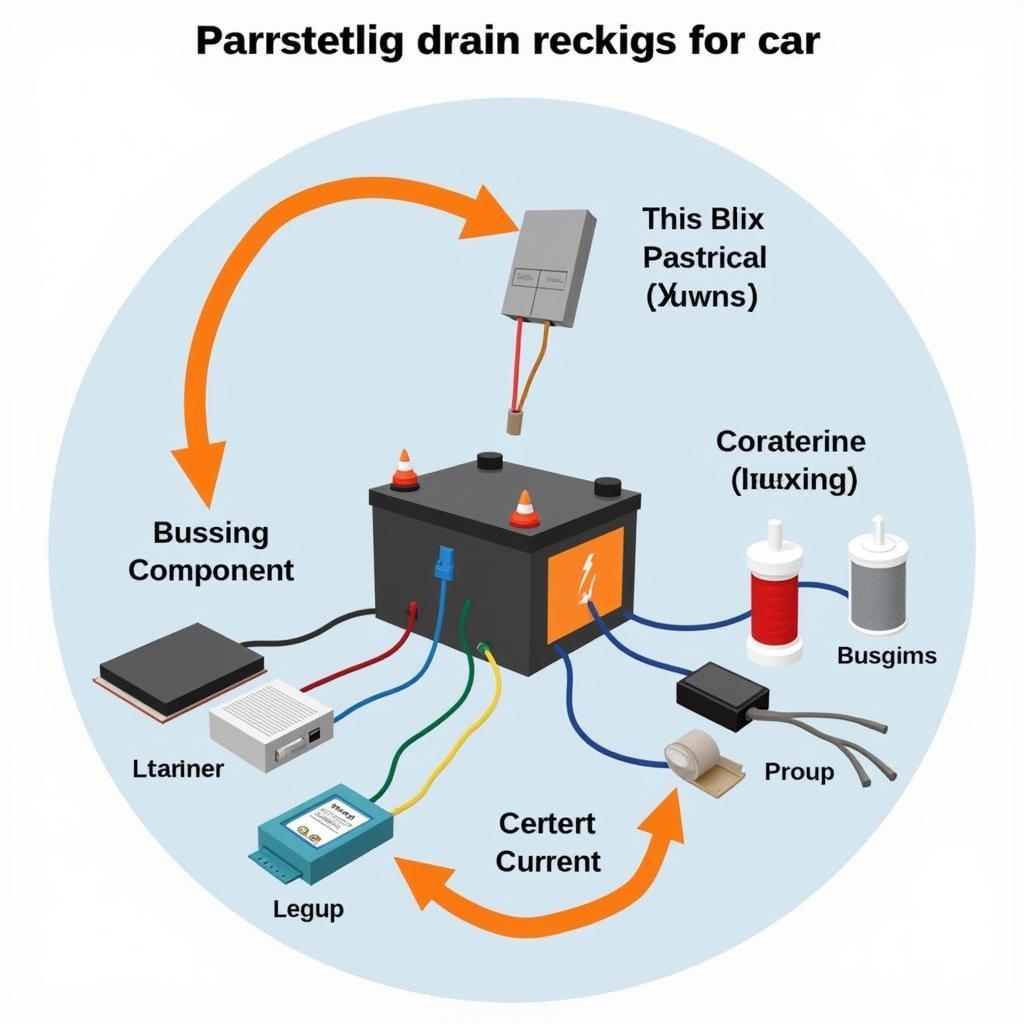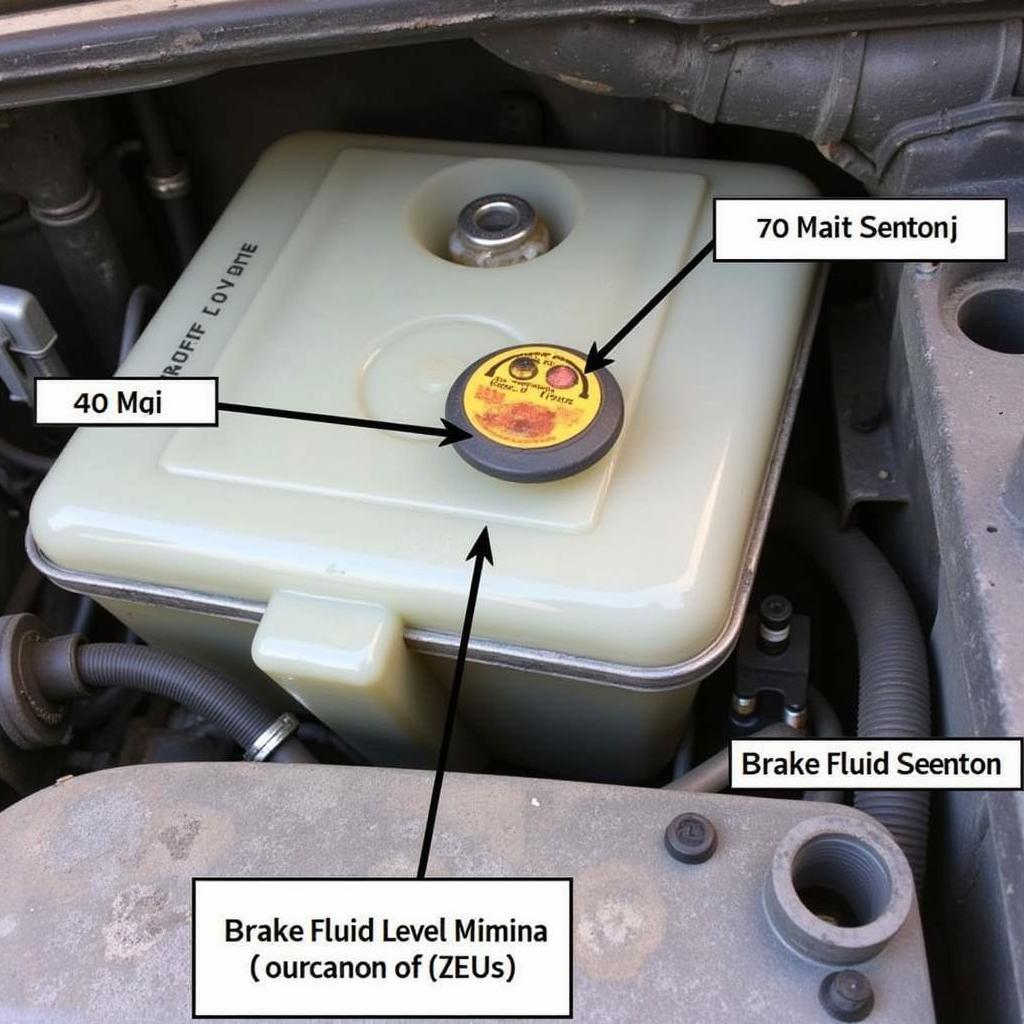A parasitic leak battery, also known as a parasitic draw, can be a frustrating and perplexing issue for car owners. Within the first 50 words of this article, we’ll delve into the complexities of this problem, offering comprehensive solutions and expert insights to help you regain control over your vehicle’s electrical system. Understanding the causes and knowing how to diagnose and fix a parasitic battery drain can save you time, money, and unnecessary headaches.
What is a Parasitic Leak Battery Drain?
A parasitic leak battery drain occurs when your car’s electrical system continues to draw power even when the ignition is off. This constant drain can slowly but surely deplete your battery, leaving you stranded with a dead battery. It’s like a hidden energy vampire, silently sucking the life out of your car’s power source.
 Parasitic Battery Drain Diagram
Parasitic Battery Drain Diagram
Several components can contribute to a parasitic draw, ranging from faulty interior lights and malfunctioning radios to more complex issues within the car’s computer system. Identifying the culprit requires a systematic approach and a bit of detective work. Do you suspect you have a parasitic leak battery? Check out our guide on common car battery issues: common car battery issues.
How to Diagnose a Parasitic Leak Battery Drain?
Diagnosing a parasitic leak battery drain involves a few key steps:
- Check for obvious culprits: Begin by inspecting interior lights, glove compartment lights, and trunk lights to ensure they are all turned off. Sometimes the simplest solutions are the most effective.
- Perform a parasitic draw test: This test involves using a multimeter to measure the current draw with the ignition off. parasitic draw test light explains how to perform this test using a test light. A reading above 50 milliamps generally indicates a parasitic drain.
- Isolate the circuit: By systematically removing fuses one at a time and monitoring the multimeter reading, you can pinpoint the specific circuit causing the drain.
- Identify the faulty component: Once the circuit is identified, you can further investigate the individual components within that circuit to locate the source of the drain.
“A methodical approach is crucial when dealing with parasitic draws,” says automotive electrical expert, Johnathan Davies. “Jumping to conclusions can lead to wasted time and unnecessary repairs.”
Common Causes of a Parasitic Leak Battery
Understanding the typical causes can help you narrow down the possibilities:
- Faulty alternator: A failing alternator can sometimes allow current to flow back into the electrical system, draining the battery.
- Bad relay: A stuck relay can continuously power a circuit, leading to a parasitic drain.
- Corroded wiring: Damaged or corroded wiring can create unintended paths for current flow, resulting in a slow but steady battery drain.
- Aftermarket accessories: Improperly installed aftermarket accessories, such as car alarms or stereos, can be a common source of parasitic draws.
Experiencing battery problems in your Discovery 4? Check this out: discovery 4 battery problems.
How to Fix a Parasitic Leak Battery Drain?
Once you’ve identified the source of the parasitic draw, the fix can range from simple DIY repairs to more complex interventions requiring professional assistance. Some common fixes include:
- Replacing faulty components: This could involve replacing a bad relay, a faulty alternator, or a malfunctioning door switch.
- Repairing damaged wiring: Corroded or damaged wiring needs to be repaired or replaced to eliminate the parasitic drain.
- Disconnecting aftermarket accessories: If an aftermarket accessory is the culprit, disconnecting or reinstalling it correctly may resolve the issue.
If you’re unsure about tackling the repair yourself, seeking professional help is always recommended.
“Remember, a properly functioning electrical system is vital for your car’s performance and safety,” advises electrical engineer, Sarah Chen. “Don’t hesitate to seek expert advice when dealing with complex electrical issues.” Having trouble with your battery dying quickly? Read more here: car battery dies quickly. What are some bad car battery signs? Learn more about them: bad car battery signs.
Conclusion
A parasitic leak battery can be a nuisance, but with the right knowledge and tools, you can effectively diagnose and resolve the issue. By understanding the common causes, performing the necessary tests, and implementing the appropriate solutions, you can keep your car’s electrical system healthy and avoid the frustration of a dead battery. Don’t let a parasitic leak battery drain your peace of mind – take charge and conquer the drain!

